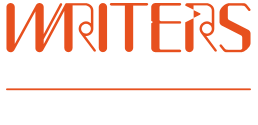
Self-publishing is becoming a popular option for writers of all styles. It gives you the opportunity to have complete control over the production of your work. However, it also necessitates that you manage each part of the publishing process, which is no small task.
The most successful self-publishers are those who plan their project carefully and set themselves realistic goals.
Download: A Guide to Self-publishing
Research the market
This is a step that should be completed before you’ve spent years perfecting your manuscript, but in case you haven’t already, it’s a good idea to see what’s out there. Are there already dozens of titles on the same topic as yours? If so, how is your title going to stand out?
If you do your research and there aren’t any books on the same topic, then great. Maybe you’ve found a niche. But don’t get too excited! Ask yourself why a publisher hasn’t already exploited this market. Maybe they’ve done the research and found there isn’t a big enough market to publish to. For example, if there are only five registered campanologists (look it up!) in Australia then this might be why there aren’t any books on the topic.
It’s important to have an idea of who is likely to buy and read your book. This type of research will be very helpful when you reach the promotion and marketing stage.
Make sure the manuscript is ready
There are developmental services you can take advantage of such as the manuscript assessment and mentorship services we offer here at Writers Victoria. And there are plenty of freelance editors who will assess your manuscript for a fee. It’s best to ensure an editor is accredited by IPEd.
To use a self-publishing service or go it alone
Deciding to take on the job yourself means weighing up all the costs, not just monetary but the time and effort as well. If you are super proactive and business savvy then it’s possible that you can go it alone. However, if you don’t do your homework there are any number of financial traps you can fall into.
If you think it’ll be too much for you, there are companies who take care of the entire process for you.
A word of warning, it’s vital to do a lot of research to find a reputable publishing service. Do internet searches, contact authors who have self-published with the provider and ask for their feedback, read the fine print very carefully and before you sign a contract seek the advice of a professional publishing contracts advisor.
I’m taking on the self-publishing process myself. What do I need to think about?
Assuming you’ve already researched the market, there are four stages to planning a publication:
- budgets and finance
- distribution
- production and printing
- promotion and marketing
Budgets and finance
A very wise teacher once began a self-publishing class by posing the question: “How much can you afford to lose?” This is not meant to scare writers from self-publishing, but to remind them of the reality of the situation. While all the money made from book sales will be yours, you will need to invest quite a lot before you start making it back.
With this in mind, it is very important to plan finances in advance, and to adjust them as the project proceeds.
When self-publishing, you need to make sure that the number of books you think you can realistically sell at wholesale price (40 per cent less than the retail price) will be enough to more than cover your costs for printing the book. So you really need to work out a budget (see ‘The Guide to Production Costs and Budgets’ for more information).
Distribution
Plan your distribution before publication. Many small publishers fall into the trap of thinking the publishing process is finished when the book return s from the printers. This couldn’t be further from the truth. The success of your project will depend to a large extent on how and where you distribute. If people don’t see the book, or read about it, they can’t buy it.
Good distribution should do two things: it should reach the intended readership and it should sell a lot of copies fast. So think about ways of distributing your books other than through bookshops.
Production and printing
Editing
Editing is often under-valued by writers, but having a qualified editor look over your work will be worth it in the long run. Amongst other things, they can help catch typos, grammar errors, clear up ambiguous text and apply a consistent style across your manuscript.
The Australian Society of Authors provide information on standard industry rates but be aware that editors charge according to their expertise – you get what you pay for.
Design
Are you going to have a professional design the cover artwork or are you happy to have a friend create something on Photoshop? Obviously, a talented designer can really help sell your work – people really do judge a book by its cover. Also, there are low-cost options for cover designs such as approaching a design student – they have talent to burn and may be willing to work at a lower rate in order to have something concrete for their folio.
Typesetting
Books need to be typset in the correct format to look professional. They also need to be in a certain file type to be printed (speak to your printer about which file type they would like but InDesign is the industry standard). You can employ a professional typesetter to do this job or have a go yourself.
There are plenty of short courses on InDesign and typesetting.
Permissions
Do you have any visuals or quotes in your work? If you do, make sure you find out if you have permission to reproduce them in your work. It is likely you need to pay a fee and/or require written permission from the copyright holder. If you do not get permission, you are infringing upon copyright and may find yourself open to prosecution and a hefty fee.
Printing
Print-on-demand has had a significant impact on the publishing industry. It is now cheaper than ever to print a low print-run edition of a book (say 200–500 books). Explore your options carefully and get a number of quotes.
For larger print runs from standard printers, the cost depends on a number of factors, such as:
- Format – do you want hardback or paperback (hardback is dearer to produce)? What size is your book? It’s cheaper to use an industry standard size:
- A format (mass market commercial fiction): 181 x 111mm;
- B format (standard novel): 198 x 128mm;
- B plus format (literary fiction/non-fiction/how-to): 210 x 135mm;
- C format (‘trade paperback’: literary fiction, non-fiction, reference): 234 x 153mm.
- Paper – the kind of paper you choose will affect the costing. Paper comes in different weights. 70–80 gsm is about standard for most non-illustrated books.
- Binding – What kind of binding do you want? Perfect bound is the cheapest option but if you’re producing a hardback you will need to consider a more durable binding like section-sewn.
- Page extent – how long is your novel? The number of pages affects the printing cost.
- Cover design – Will it be full colour? Do you want any effects such as spot varnish or foils?
Bar Codes and International Standard Book Numbers
Publishers are required to obtain an International Standard Book Number (ISBN), and to lodge copies of their publication with both the National Library of Australia, and in Victoria, with the State Library of Victoria. You can find out about ISBNs on the Thorpe website.
Many bookshops will only sell an item if it has a barcode printed on the cover. Registering and supplying bar codes is a business. A full list of suppliers can be found in the Yellow Pages.
Sales, publicity and marketing
There are many ways to promote and market a book. Some types of publicity – such as reviews, word of mouth and articles – are free, but others will cost. You’ll be thankful that you devised an advertising budget beforehand.
Marketing
It’s not enough to write and print your book – you need to sell it. Consider how you can use social media to your advantage, generate and upkeep a website, network, and consider advertising. If you’ve written a book on the history of Harley Davidson motorbikes then place an ad in the appropriate trade magazine and go to car and motorbike expos with armfuls of your book. Think about how best to reach your intended audience – an d no, your audience isn’t ‘everyone’ it’s ‘people who ride or are interested in motorbikes’.
Sales
Are you just going to do direct sales or do you want your book in bookshops? Getting your book into a bookshop is hard. You’ll be competing with the sales representatives of major publishers and fighting for limited shelf space. Consider the deals you can offer the book buyer. And don’t forget your book’s Unique Selling Point (USP) – approaching a bookseller is like approaching a publisher.
You have about five seconds to sell your idea to them and convince them your book is going to fly off the shelves. So focus on your book’s USP.
Book catalogues
Two or three months before your book is published it is imperative that you pass on details of your publication to one of the catalogues which booksellers use to find books. These, such as Bookdata and Books in Print, provide bookshops with the information they need to order a requested book. If you don’t do this and a customer requests your book by name, the bookseller will not know where to get it.
Information Sheet
Download: A Guide to Self-publishing
